The midair at Reno Stead on September 17, 2023 unfolded not on the racecourse, but in the pattern—where things should have been winding down. After the T-6 Gold Race ended, two North American Texans—Race 6 (N2897G, a T-6G) and Race 14 (N57418, an AT-6B)—entered for runway 8. Multiple witnesses later described Race 14 on a southerly base leg and Race 6 on a west-southwest downwind. Their flight paths converged, and the airplanes collided about 7,900 feet northwest of the runway 8 threshold, fatally injuring both pilots. Weather was VMC with 10 miles of visibility and no ceiling. The defining event was simple and stark: a see-and-avoid breakdown during a non-standard pattern after a race.
Who Was Flying
Both pilots were experienced aviators with commercial certificates and instrument airplane ratings. The Race 6 pilot was 67, held airplane single-engine land and helicopter ratings, and reported 10,976 total hours. The Race 14 pilot was 65 with airplane single- and multi-engine land ratings and 3,404 total hours. Both held second-class medicals with limitations. Toxicology was negative for both pilots. The report did not list time in type for either pilot, but these were not low-time warbird pilots stepping into something unfamiliar for the first time; they were credentialed, current, and had been racing. That matters because it reminds us that experience doesn’t inoculate anyone from pattern traps.
The Final Laps, Then the Pattern
The timeline mattered. About 41 seconds after the checkered flag, Race 14 called “downwind abeam.” Roughly 30 seconds later, Race 6 reported the same. About five seconds after that, Race 14 transmitted “base with gear.” Other aircraft were also calling “downwind abeam,” and the frequency carried several unintelligible transmissions in the mix. Roughly 74 seconds after Race 14’s first call, a “red flag” was announced—by then, the collision had already occurred.
From the tower’s Race Control position, the controller had advised Race 14 it was number one to land after the course exit and told Race 6 to follow traffic ahead on downwind. When Race 14 reported base and gear, he cleared it to land. Shortly after, observers in the tower saw one aircraft falling near the base leg area, then a second airplane impact.
A witness video showed Race 14 wings-level overhead; about six seconds later, Race 6 entered the frame in a left bank. About a second after that, the airplanes collided. That sequence matched the geometry witnesses described: Race 14 flew a wider base than typical, and Race 6 flew a tighter-than-typical downwind, putting Race 14 to the right of Race 6’s path—outside the slice of sky a downwind pilot would naturally be scanning. The pilot of another race ship (Race 66) reported he “finally” saw Race 14 below and to his right on base and Race 6 to his left in level flight—neither where he expected them to be—just before the collision.
The Environment and the Human Factors
The sun’s position at the time didn’t help. The center of the sun’s disk was about 50° above the horizon, with an azimuth that put it slightly ahead and to the right of Race 14’s track, and to the left of Race 6’s. That meant each pilot was working with bright sky and glare near the sector where the other airplane lived. Add race-recovery workload—high energy states decaying to pattern speeds, configuration changes, radio calls, spacing with multiple airplanes in close proximity—and you have a classic see-and-avoid challenge. “See” is never guaranteed; it’s a probability game you can tilt in your favor with disciplined geometry, speed control, and conservative spacing. But in this pattern, both airplanes were off the “standard” picture: one wide, one tight.
What the Procedures Said—and Didn’t Say
Reno’s Flight Operations SOPs for 2023 spelled out who did what: the Air Boss, Controller in Charge, and Race Control. Race Control owns airborne comms during events and provides advisory service—sequence numbers to landing—but not formal traffic separation. There was an expectation, historically, that Race Control would call out conflicts, but that wasn’t a written procedure. The Pylon Racing Seminar (PRS) materials for the T-6 Class published a clear pattern picture: cool-down at 7,000 feet MSL over the course, downwind at 6,500 feet MSL, report “Abeam runway,” then “Base with gear,” and expect a landing clearance. The slide on page 11 even annotated the flow visually, emphasizing not to over-extend downwind. None of that mandated that controllers deconflict airplanes; it assumed pilots would fly predictable legs and self-separate with standard sightlines and calls.
Collision Geometry in Plain Language
Think of it like this: if you’re on downwind and you expect traffic to appear inside your left turn to base, your eyes are biased left and slightly ahead. If the base traffic is actually outside and to your right due to a wider base, it can slip into a blind cone—especially under a glare band. The report’s analysis concluded that Race 14’s wider-than-normal base and Race 6’s tighter-than-normal downwind likely placed Race 14 to the right of Race 6’s flight path. Combine that with Race 14’s “base with gear” call: if Race 6 was mentally indexing that call to the left, because that’s where “normal base” should be, he may simply not have looked far enough right to catch the crossing target in time. Witness statements from other racers supported that both airplanes were “not where [they were] expected to be.”
The Aftermath on the Ground
Both airplanes came down in open sagebrush northwest of runway 8. The wreckage diagram on page 9 showed the debris origin northwest of the threshold with a roughly 1,366-foot debris path trending south toward Race 14’s main wreckage. Race 6’s wreckage, which contained pieces from Race 14’s tail, came to rest nearby with the wing and fuselage heavily disrupted. There was no post-impact fire. Those details fit a high-energy, crossing-angle impact with significant structural separation in air.
Probable Cause
The NTSB’s bottom line was direct: both pilots failed to see and avoid each other in the traffic pattern. Contributing factors were the failure of both to fly standard downwind and base legs. There was also a noted lack of communication by ATC/Race Control personnel, but the procedures did not assign them separation responsibility. It’s an uncomfortable mix: a busy, non-tower-separation environment relying on standardization and see-and-avoid—precisely when standardization slipped.
Lessons for the Rest of Us
First, fly a normal picture when multiple airplanes are inbound—especially after a high-workload phase. The best “traffic alert” is a predictable path that everyone else expects. If you must adjust spacing, do it with altitude and time in the cool-down, or extend upwind before you join, not by carving a tight downwind or a wide base inside a conga line.
Second, bias your scan where the other guy might not be. This is counterintuitive, but when the radio call doesn’t match what you see, treat that mismatch as a hazard cue. If someone calls “base with gear” and you can’t find them where they should be, widen your search sector and slow down. Consider S-turns on downwind, gentle wing rocks, or a call like, “Race Control, Race 6, looking for Race 14—last call base with gear—no joy.” Even if Race Control is advisory, that call invites help and buys brain cycles.
Third, treat sun angles like an actual risk, not background weather. A 50-degree-high glare band is exactly the kind that hides a small target against bright sky. Use visors, shift your headings slightly to move the glare off the nose, and don’t be shy about adding spacing until you’ve got the traffic positively identified.
Fourth, know what the people on the frequency will—and won’t—do. Reno’s SOPs set Race Control as advisory with sequencing, not as your traffic avoidance backup. If the system isn’t designed to call conflicts, build an extra safety margin into your own geometry and comms. “Race 66 has both Race 14 and Race 6 in sight” was a great call from the pilot who finally saw both; more of that kind of cross-checking can break the error chain.
Finally, rehearse the “go-around in the conga line” mindset. If you’re not happy with spacing or you lose the picture, go around at pattern altitude (per event procedures) and reset. In the race environment, there’s a ton of pressure to keep it moving and land with the pack. Resist it. A clean re-entry is better than a rushed base.
Closing Thoughts
This accident didn’t hinge on exotic causes. It came down to two good pilots in demanding circumstances, a saturated frequency, and a pair of non-standard legs that erased each other’s expectations. Air racing is inherently high risk, but this risk moment—post-race, in the pattern—looked a lot like the flying many of us do. The lesson transfers cleanly: when things get busy, fall back on standardization, slow down, and make the picture obvious for everyone around you.

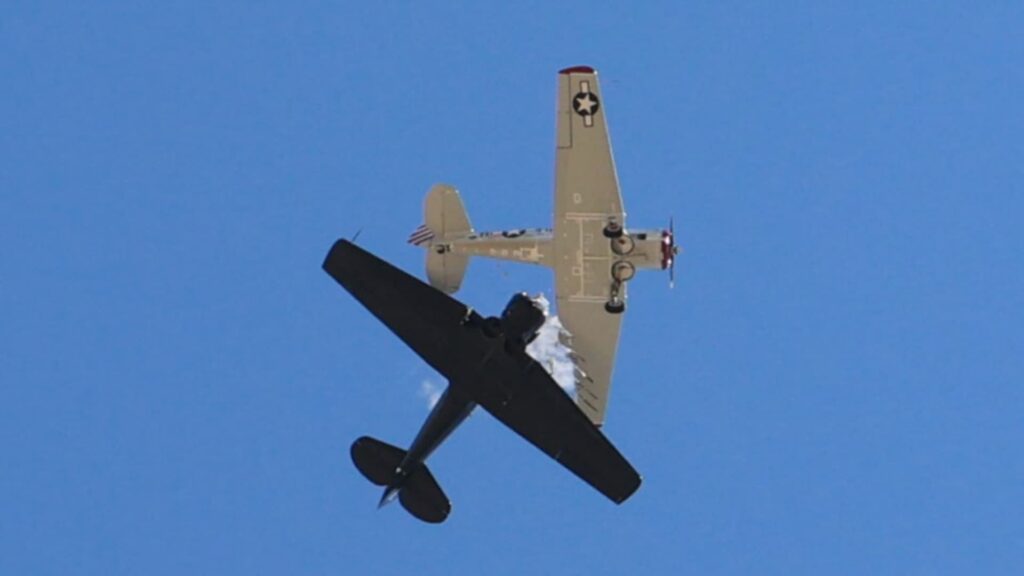



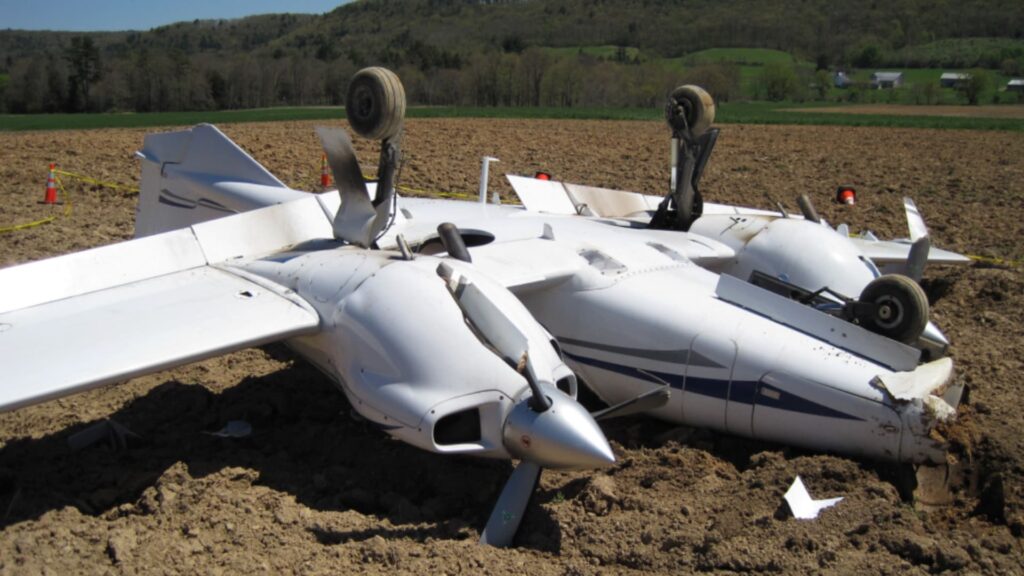
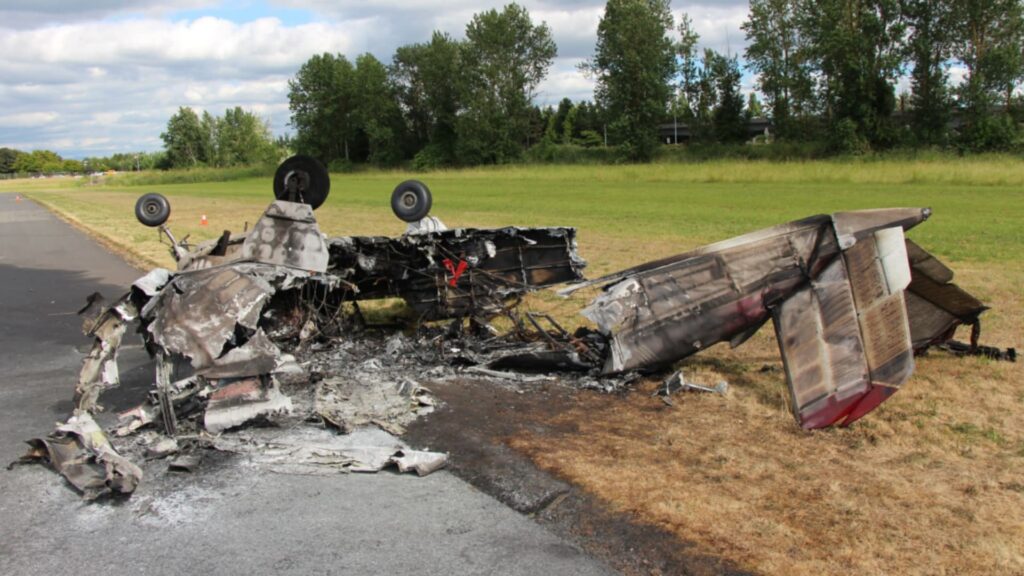
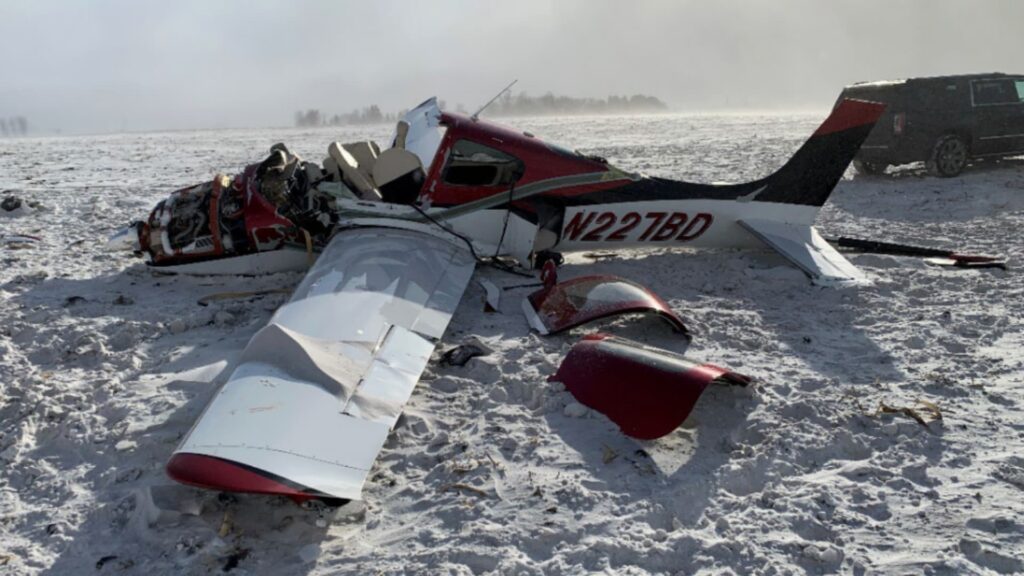
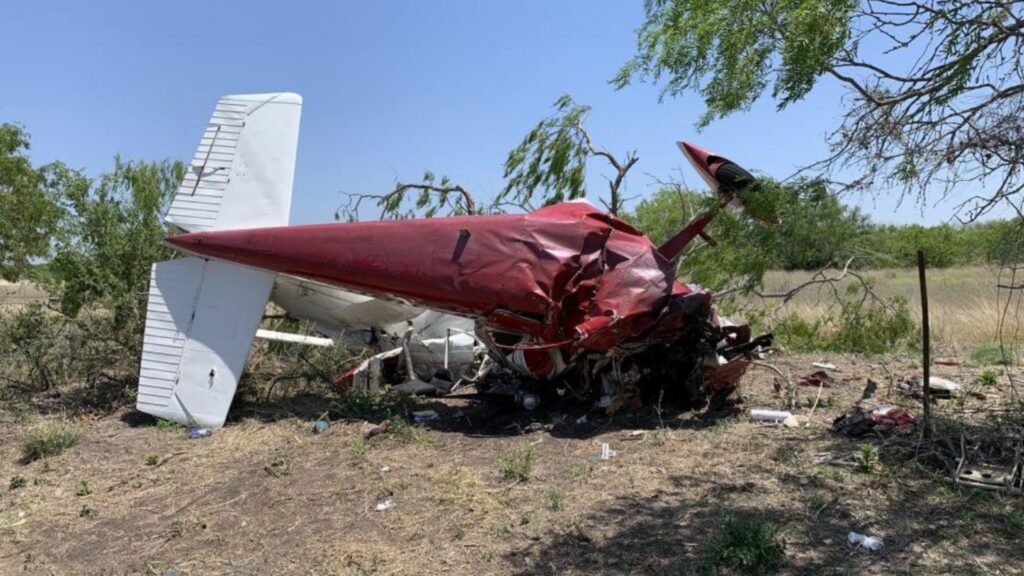


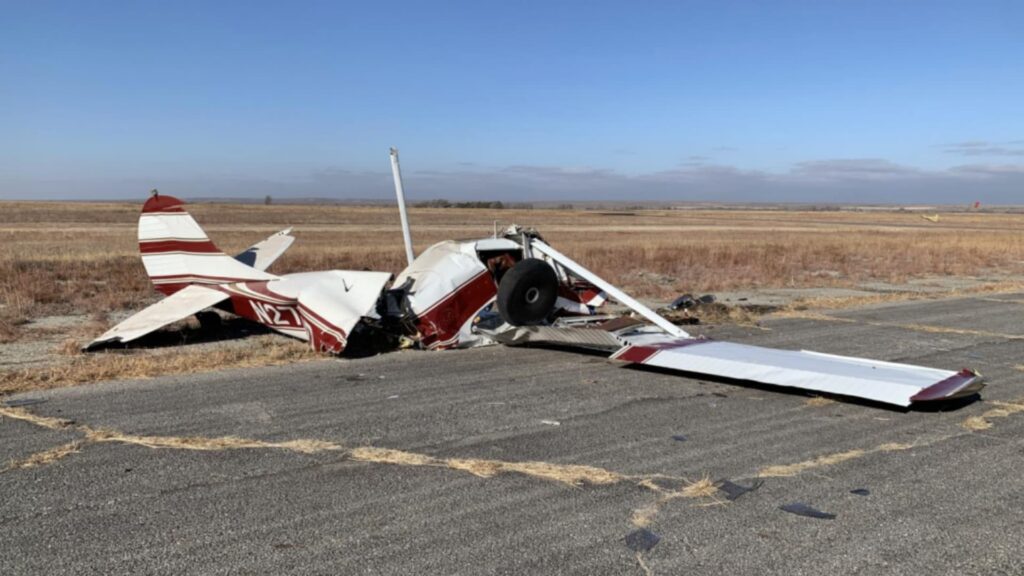
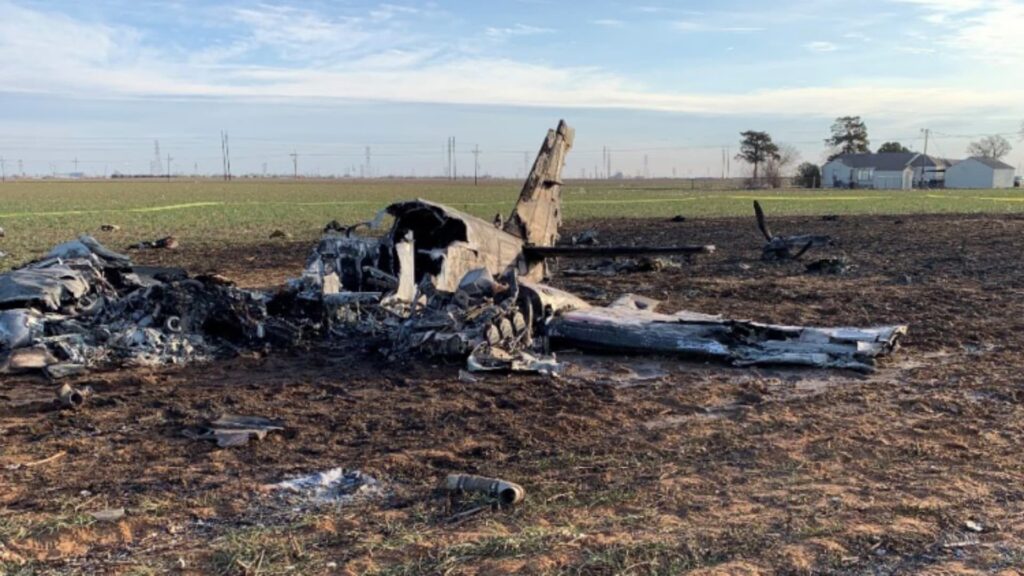
3 Comments
There is a dirty little secret in General avaition vfr..”See and avoid does not always work”,Midairs do happen.
Your final sentence is one to remember. Need to file it in the front of our minds.
Race adrenaline was flowing hard in all the cockpits – in every heat. Lots of target fixation – hyper focus states.